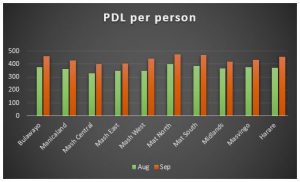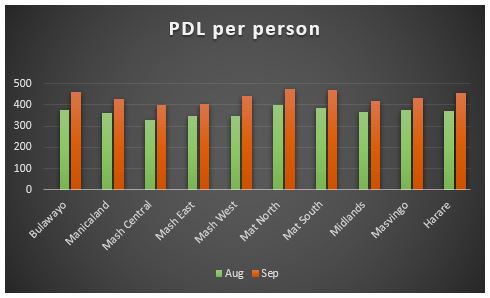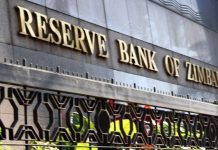HARARE – Latest data from Zimstat shows that the average Zimbabwean lived on US96 cents a day or ZWL$14.60 in September up 18.18% from ZWL$12.78 or US$1.174 in August. The movement is in line with the September monthly inflation figures of 17.7% but means that Zimbabwe is now in extreme poverty as consumption is now below the World’s Bank standard measure of US$1.90 a day.
According to the World Bank, one in 12 people on the planet still live in extreme poverty, many of them in fragile and conflict-torn places. Sub-Saharan Africa is the only region in the world where the overall number of extremely poor people is increasing rather than decreasing. Globally, rates of extreme poverty — defined as earning less than $1.90 (€1.64) a day — have dramatically declined, falling from 1.9 billion in 1990 to approximately 736 million. However, an estimated 413 million people in Africa currently live in extreme poverty — more than half of the world’s total.For Zimbabwe in particular, the current economic challenges have cast a long shadow on welfare resulting in a 14% reduction in lifetime earnings in Zimbabwe in 2018.
The Poverty Datum Line for Zimbabwe stood at $438.32 per person in September 2019. This means that an individual required that much to purchase both non-food and food items as at September 2019 in order not to be deemed poor. This represents an increase of 20% when compared to the August 2019 figure of $365.40. The PDL for an average of five persons stood at $2,191.62 in September 2019. This represents an increase of 20% when compared to the August 2019 figure of $1,826.99.
ILO recommends that the PDL should be used as a benchmark or a reference point in determining minimum wages. جدول اليورو 2024 Although the recurrent result is that minimum wages and poverty are inversely related, one cannot always conclude that a rise in the minimum wages is the most cost effective way to reduce poverty.
The poverty datum lines vary by province as prices vary from place to place. The TCPL for an average household in September 2019 ranged from $2,007 in Mashonaland Central Province to $2.365.00 in Matabeleland North Province.

The food poverty line (FPL) as at September 2019 stood at $176.61. This means that the minimum needs basket cost that much per person in September 2019. طريقة لعب الدومينو This represents an increase of 21.7 percent over the August 2019 figure of $145.06. The September 2019 FPL for an average of five persons in Zimbabwe stood at $883.03. This represented an increase of 21.7 percent when compared to the August 2019 figure of $725.29.
A recent study by Oxfam rated Nigeria as the country that does the least when it comes to tackling poverty, out of 157 countries. Its social spending (on health, education and social protection) is shamefully low, which is reflected in very poor social outcomes for its citizens. القمار الإلكتروني One in 10 children in Nigeria does not reach their fifth birthday, and more than 10 million children do not go to school. Sixty percent of these are girls. Zimbabwe is ranked 92nd. – FinX









